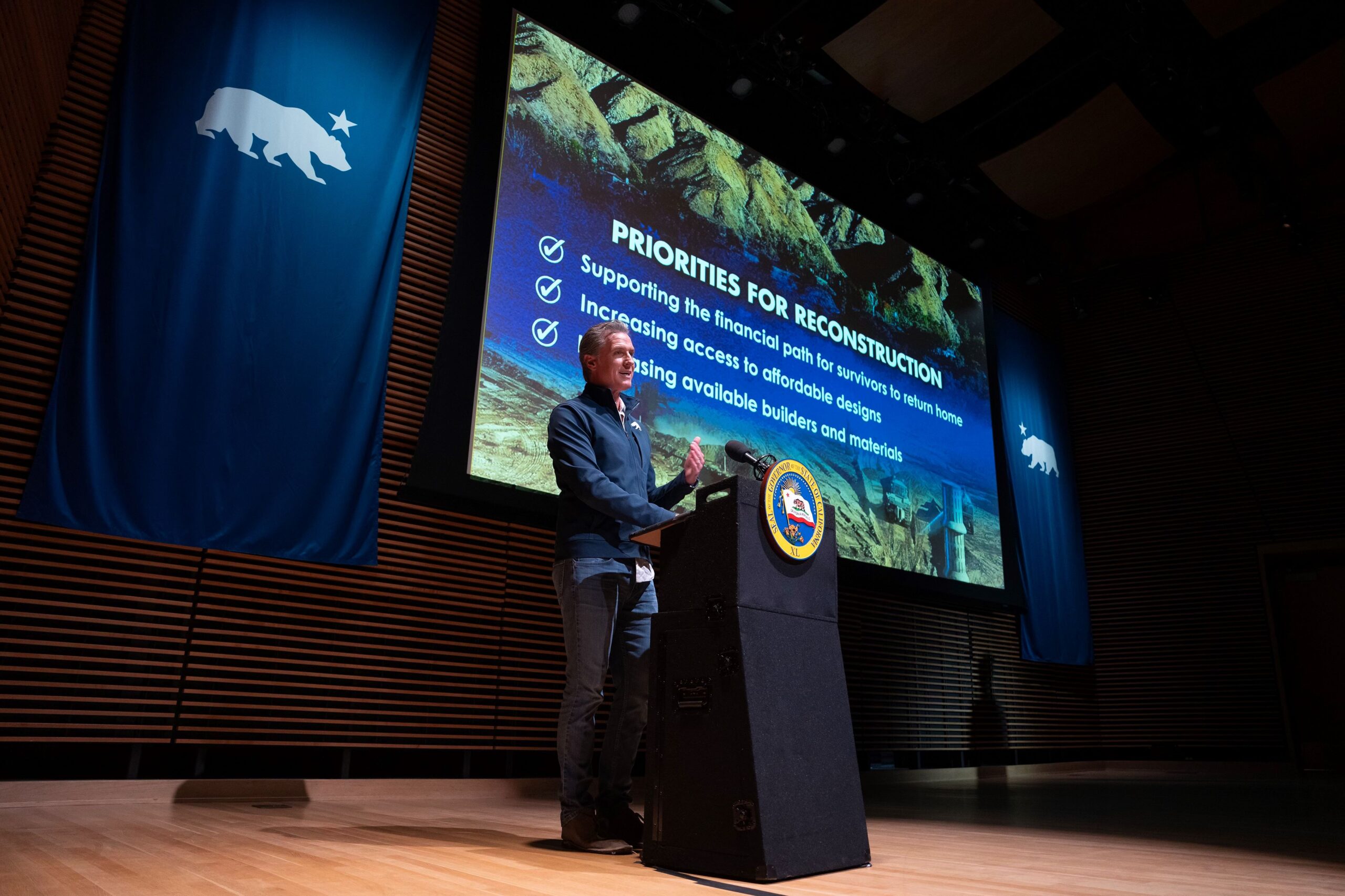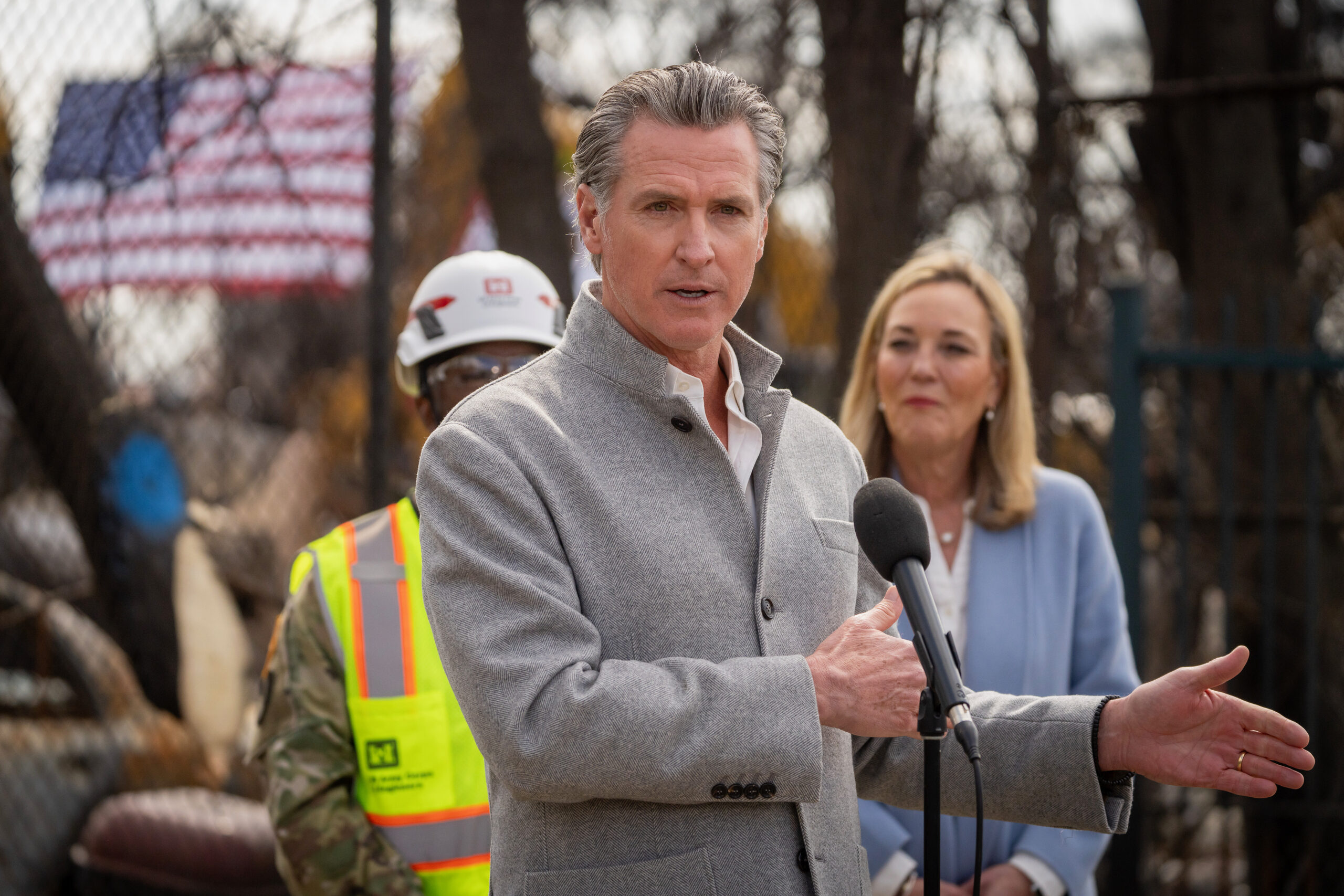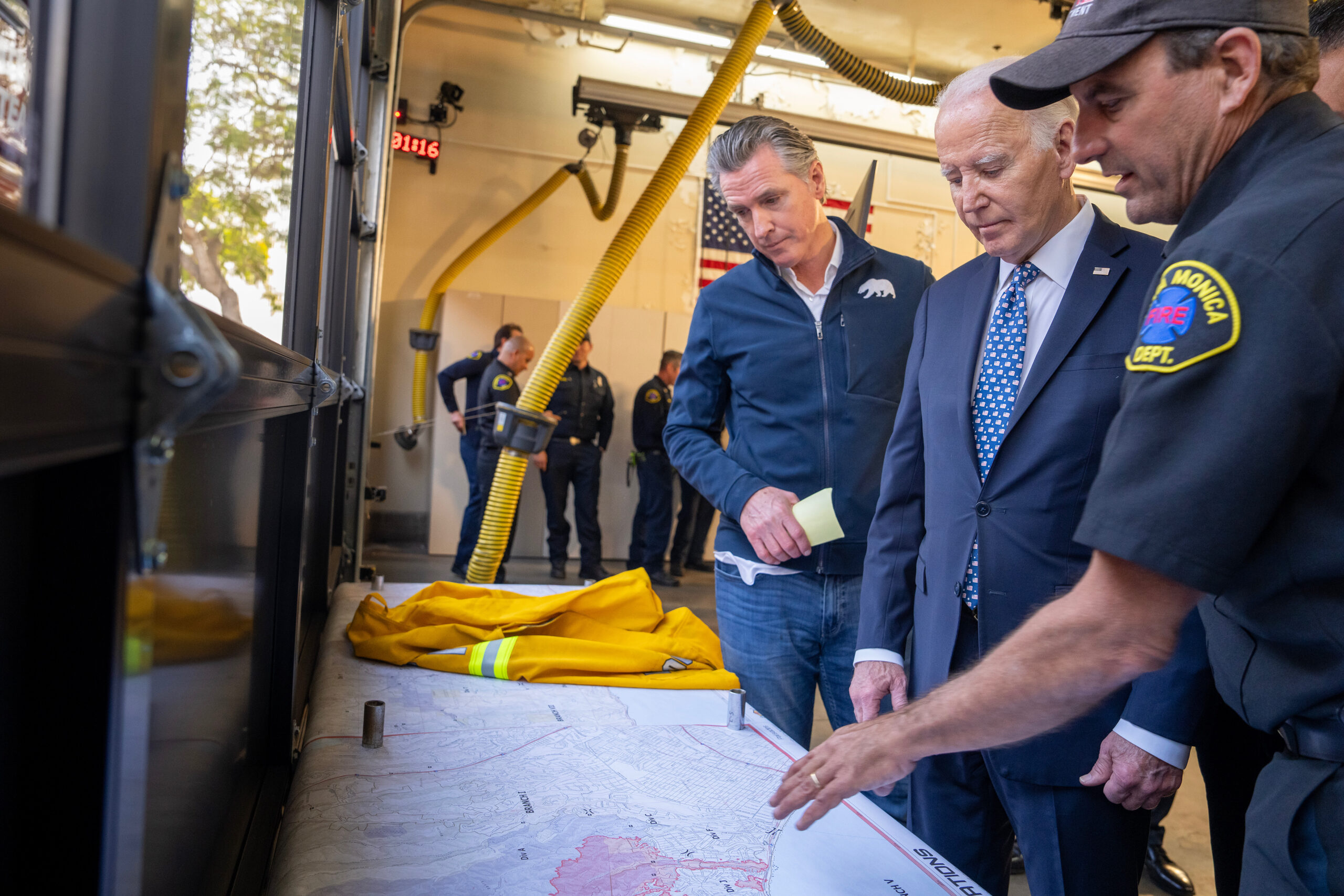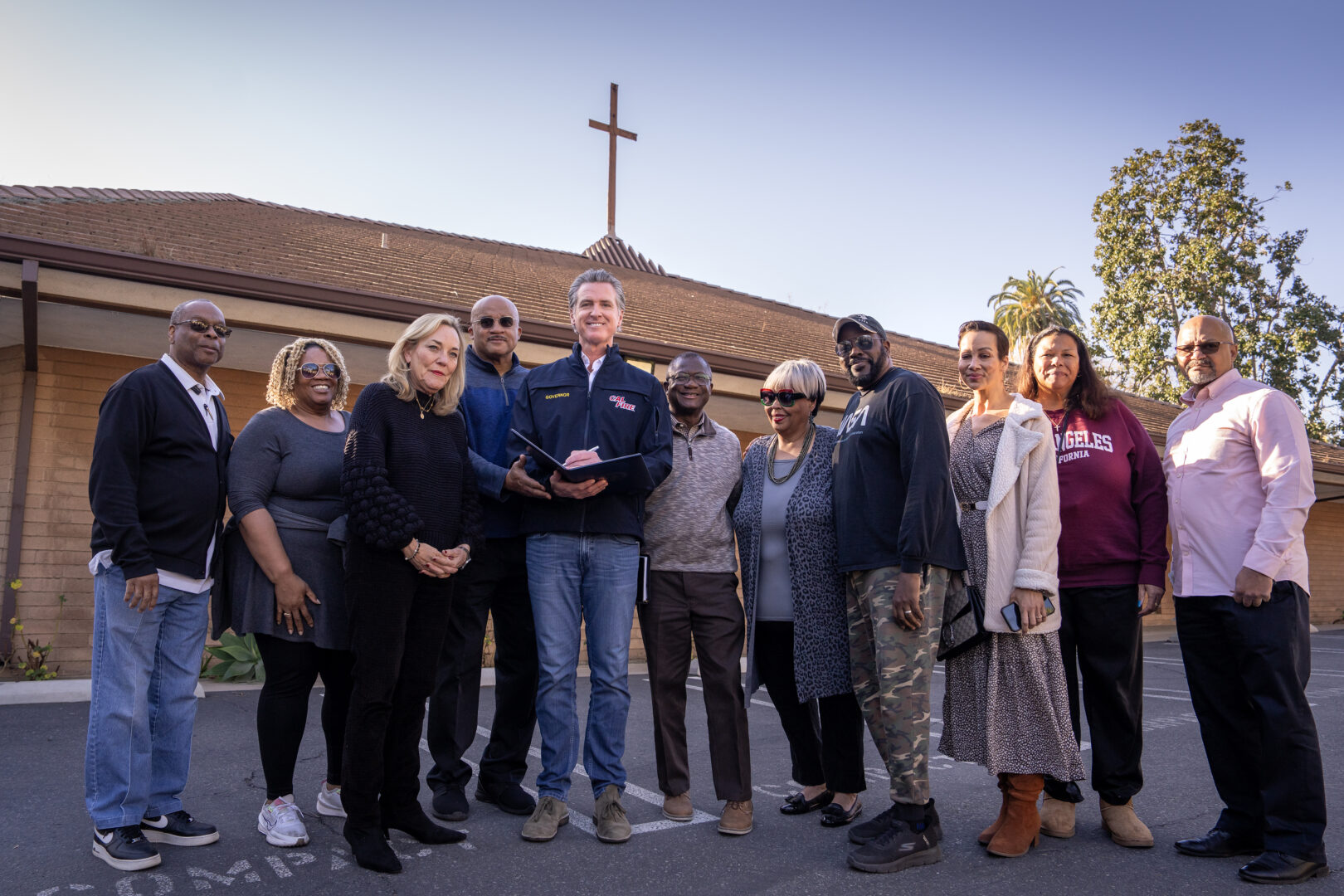
In a determined move to accelerate California’s recovery from one of its most destructive fire seasons in recent history, Governor Gavin Newsom has announced a $101 million infusion of funding to jumpstart the rebuilding of affordable multifamily rental housing in fire-ravaged areas of Los Angeles.
The announcement comes six months after the catastrophic wildfires that swept through communities from Pacific Palisades to Malibu, leaving thousands of families displaced and entire neighborhoods in ruins.
The funding marks a strategic and urgent response to what many housing advocates have called a humanitarian and economic crisis. By directing this substantial sum into the state’s affordable housing infrastructure, the administration aims not only to restore homes but also to provide long-term stability to low-income families most affected by the fires.
According to the governor’s statement, this investment will be channeled into developments that can begin construction quickly and are located close to the burn zones, ensuring swift delivery of relief where it is most desperately needed.
The January fires, now among the most damaging in the region’s recent memory, scorched thousands of acres, reduced hundreds of structures to ashes, and disrupted the lives of entire communities.
As the emergency crews withdrew and the ashes cooled, the full magnitude of the disaster became evident—not only in terms of physical loss but in the social, economic, and psychological displacement of families who found themselves suddenly homeless, jobless, and emotionally devastated.
The need for a focused rebuilding strategy became a rallying cry for state and local leaders, and now, with this new round of funding, that cry is beginning to be answered with concrete action.
The initiative will be administered through a streamlined program designed to simplify and expedite the development of affordable housing projects. Developers can access the funding via a single application system, which integrates multiple funding sources into one cohesive framework.

This model, described by officials as the Multifamily Finance Super NOFA (MFSN), is structured to cut bureaucratic delays and reduce the friction that often slows down housing development.
The new allocation, officially titled the “MFSN-LA Disaster NOFA,” is uniquely dedicated to aiding recovery efforts in the Los Angeles region following the wildfires.
What makes this latest effort particularly impactful is its prioritization of projects that are both “shovel-ready” and focused on serving those directly affected by the fires.
Applications will be ranked higher if they are situated near wildfire burn zones and demonstrate an immediate readiness to begin construction.
Additionally, preference will be given to housing developments that reserve units specifically for displaced residents, ensuring that the benefits of the funding reach those who need them most.
In outlining the goals of this new program, officials emphasized that housing recovery must be more than just replacing lost units—it must also support broader community resilience.
This includes addressing the long-term implications of climate change, building structures that are resistant to future wildfires, and ensuring that displaced residents are not permanently pushed out of the communities they once called home.
The fires earlier this year were a brutal reminder of California’s growing vulnerability to extreme weather events. Fueled by high winds, dry conditions, and flammable terrain, the Eaton and Palisades wildfires tore through urban-wildland boundaries, igniting homes, businesses, and critical infrastructure in some of the state’s most populated areas. Emergency responders acted swiftly, but not before lives were upended and large swaths of housing stock were obliterated.

In the aftermath, attention quickly turned to the rebuilding process. But for many residents—especially low-income renters who had few safety nets—the path to recovery proved elusive.
Insurance gaps, rising construction costs, and the sheer complexity of rebuilding in a high-demand housing market combined to delay recovery. Meanwhile, shelters and temporary housing facilities became overwhelmed, and communities grappled with how to restore stability for those affected.
With this funding package, state leadership is signaling that affordable housing must be a cornerstone of California’s broader disaster response. Officials reiterated that returning displaced residents to permanent, safe, and affordable homes is not only a matter of compassion but a critical component of the state’s resilience strategy.
The $101 million now earmarked for Los Angeles adds to an earlier $382 million statewide fund and a separate $50 million allocation for tribal communities, underscoring a layered approach to rebuilding that spans diverse geographies and populations.
But money alone does not rebuild communities. The success of this initiative hinges on the state’s ability to move quickly, collaborate with developers, and coordinate across agencies.
Local governments will play a vital role in facilitating site approvals, streamlining permits, and aligning infrastructure investments with housing development. The state has pledged technical assistance and administrative support to help move projects forward at an unprecedented pace.
While many view this announcement as a major step forward, the road ahead remains long and fraught with challenges. Supply chain disruptions continue to affect construction timelines, and rising interest rates have complicated financing structures.
Labor shortages and permitting hurdles still pose risks to delivery. But housing advocates are optimistic that with political will and sustained attention, the vision of rebuilding fire-impacted communities can be realized.

Moreover, this effort has broader implications beyond just Los Angeles. As California continues to face an increasingly volatile climate, housing policy and wildfire response will become increasingly intertwined.
The governor’s office has indicated that this latest move is part of a more extensive effort to weave climate resilience into the state’s housing strategy. Future developments will be expected to incorporate fire-resistant materials, defensible space planning, and compliance with updated building codes that account for wildfire risk.
For the thousands of families still living in limbo—many of whom are staying with relatives, living in cars, or scattered across temporary housing—this funding represents a vital lifeline.
The promise of returning to their neighborhoods, reuniting with their communities, and reestablishing a sense of home is a powerful motivator for state and local officials alike.
In many ways, this moment is a test of California’s ability to rise from disaster not just with recovery, but with transformation. By choosing to prioritize affordable housing in its response, the state is making a statement about who deserves to be at the center of its rebuilding narrative.
The victims of the wildfires are not being treated as footnotes in the state’s economic engine, but as central figures in a story of resilience, equity, and renewal.
As the first wave of funds becomes available, attention now turns to implementation. The coming months will reveal whether this bold funding initiative can translate into real-world progress on the ground. Success will be measured not in dollars allocated, but in homes built, families resettled, and communities restored.
California’s history is marked by disasters, but also by its capacity to recover stronger. This investment in Los Angeles represents more than just a housing program—it is a declaration of commitment to the people who lost everything, and a blueprint for how to rebuild with dignity and purpose. The flames may have faded, but the fight to restore hope is only just beginning.




